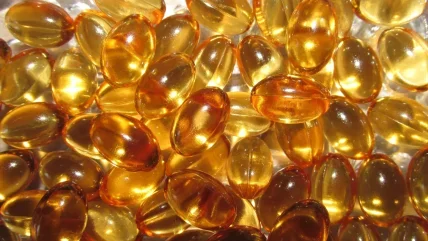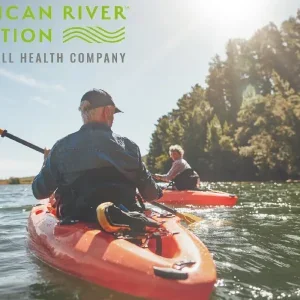
What is Vitamin E?
Vitamin E was discovered in 1922, isolated in 1935 and first synthesised in 1938. Because the vitamin activity was first identified as essential for fertilised eggs to result in live births (in rats), it was given the name “tocopherol” from Greek words meaning birth and to bear, or carry.
Vitamin E is a family of fat-soluble compounds. It occurs naturally in eight different forms that include four tocopherols and four tocotrienols. All eight feature achromane double ring, with a hydroxyl group that can donate a hydrogen atom to reduce free radicals, and ahydrophobic side chain which allows for penetration into biological membranes. Both the tocopherols and tocotrienols occur in α (alpha), β (beta), γ (gamma) and δ (delta) forms, as determined by the number and position of methyl groups on the chromanol ring. Of the many different forms, Alpha-tocopherol (α-tocopherol) is the most biologically active form of vitamin E.
TocobestTM Vitamin E Series
- Natural
- Mixed Tocopherols
- alpha-Tocopherol
- D-alpha-Tocopheryl Acetate
- D-alpha-Tocopheryl Succinate
- TPGS(Tocofersolan)
- Synthetic
- DL-alpha-Tocopherol
- DL-alpah-Tocopherol Acetate
Differences between natural and synthetic vitamin E
- Natural vitamin E has higher purity. Biological activity of natural vitamin E is more than 3 times that of synthetic vitamin E. Natural vitamin E has no side effects.
- Absorption of natural vitamin E is better than that of synthetic forms. Bioavailability of natural vitamin E is generally two to eight times that of synthetic forms. A study showed that the absorption of natural vitamin E in pregnant women is three and a half times better than that of synthetic forms.
- Natural vitamin E exists in the body for a longer period of time.
- Natural vitamin E is safer. Natural vitamin E is extracted and refined from vegetable oil deodorised distillate, which is safer than chemically synthesised vitamin E.
- Natural vitamin E can be tested by the parameter Specific Rotation, while synthetic forms don’t possess this parameter
New specification – TocobestTM DL-α-Tocopheryl Acetate Powder(CWS) 15%
DL-alpha-Tocopheryl Acetate Powder 15% is an almost white to light yellow free-flowing powder. The individual particles containing dl-alpha-tocopheryl acetate are finely dispersed in the matrix of arabic gum and sucrose.
Chemical properties:
CAS No.: 7695-91-2
EINECS No.: 231-710-0
Chemical formula: C31H52O3
Molecular weight: 472.75
Ingredients: Pure DL-alpha-Tocopheryl Acetate 15.0%, Sucrose 54.0%, Arabic Gum 30.0%, and Silicon Dioxide 1.0%.
Advantages
- Better water dispersity and transparent water solution.
- Dispersed in the matrix of arabic gum and sucrose.
- Well used in beverages.
Applications
- Prolonging the life of red blood cells and playing an essential role in cellular respiration.
- Protecting biological membranes including the cardiovascular system, nerves and muscles.
- Helping the body effectively use and store vitamin A.
- Protecting B-complex and vitamin C from oxidation reactions.
- Playing an important role in intermittent claudication, thrombotic disease, immune function, protection of lipoproteins from oxidation, cardiovascular disease prevention, cancer prevention.
- Helping protect against environmental pollutants and cigarette smoke.
Other special considerations for vitamin E
- Because vitamin E is fat-soluble, it’s best absorbed when taken with a meal containing some fat.
- Vitamin E loses its potency when exposed to air, heat, and light, so supplements should be stored in a dark, cool place.
- People who are taking anticoagulants (blood thinners or aspirin) should take vitamin E supplements only under physician supervision.
- If you are taking statins, do not exceed 400 IU of vitamin E because it can dramatically reduce the benefits of some cholesterol drugs.
- Adverse effects may also occur when taking vitamin E and chemotherapy drugs, or mineral oil.
- Vitamin E absorption may be altered when taking the pharmaceuticals Cholestyramine, Colestipol, or Orlistat.
- Levels of vitamin E may be affected by seizure medications, zinc, and fish oils.
- High doses of vitamin E may increase the body’s vitamin K requirement, and increased intake of omega-6 fatty acids may increase vitamin E requirements.
- Analysis of seven brands of commercially available vitamin E showed significant variability between actual content and stated dosage on the label.
Recommended daily intake
According to the National Institutes of Health (NIH), the US recommended daily allowance (RDA) of vitamin E (calculated as pure D-alpha-Tocopherol) for adults older than 14-years is 15 mg (or 22.4 IU); pregnant women of any age should get 15 mg (or 22.4 IU); and breastfeeding women of any age should take 19 mg (or 28.4 IU).
The NIH’s RDA and Adequate Intake (AI) for children:
- Infants 0-6 months, 4 mg/day (6 IU/day)
- Infants 7-12 months 5 mg/day (7.5 IU/day)
- children 1-3 years, 6 mg/day (9 IU/day)
- children 4-8 years, 7 mg/day (10.4 IU/day)
- children 9-13 years, 11 mg/day (16.4 IU/day).






